KLIM Badlands GTX (Long) winter gloves
There are ways to ride in reasonable comfort despite fallen mercury. Fairings and windscreens reduce the dramatic impact of wind-chill on the highway. Insulated gear can create an effective bulwark against frigid temps. Electrified clothing and heated grips/seats may augment the warmth generated by our bodies. Unfortunately, some of these benefits typically come with a cost: barriers erected against the cold can also disconnect us from our motorcycles, reducing tactile feedback and rendering control inputs clumsy and awkward. Nowhere is this more salient and problematic than at the interface between our hands, handgrips, and hand-operated controls. Winter riding gloves have the extremely difficult job of shielding our hands – and especially our fingers – from the blast of frosty air assaulting them at speed. Unless our bikes are equipped with hand guards or a wide fairing, this may be the most challenging task for any piece of our gear, given the “leading edge” position of our hands and their relative dearth of insulating flesh and fat. Just as our circulatory system helps us shed heat in the summer, it spreads warmth from our core to our extremities in the winter. To conserve warmth, blood vessels constrict near the surface, limiting both the amount of heat lost to the surrounding environment and the amount distributed to nearby tissue. Consequently, our hands are disadvantaged from the inside as well as the outside when we ride in low temperatures.
In order to stand half a chance of successfully addressing this problem, winter gloves must be constructed with a layer of insulation. While higher-tech synthetics reduce the amount of bulk required for the same level of protection as natural fibers like wool or down, thicker is still better when it comes to staying warm. However, thicker is always worse for agility and tactile sensitivity, so glove makers seek a balance, with any design representing significant compromise. Riders must also choose between imperfect trade-offs, deciding which is the lesser of two evils: losing feel because of a glove’s bulky construction or as a result of the numbing/stiffening cold it lets through.
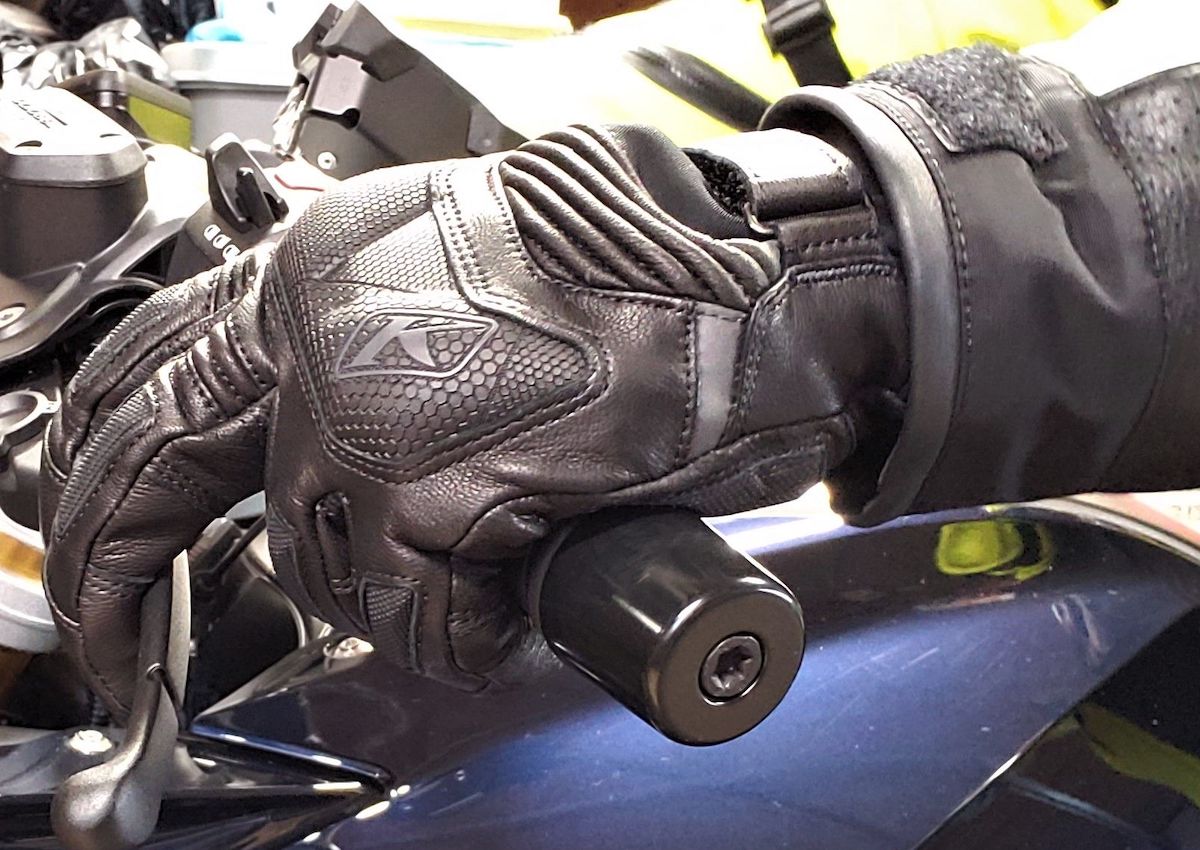
On my first few rides this winter, I was frustrated and dismayed by the sacrifices required by my old favorite winter gloves, which were the best I’d been able to find when I bought them several years ago. I went in search of a newer design that might improve my contact with the bike and controls while still keeping my paws from freezing. Given the increasing prevalence of heated grips, I hoped some company might have eliminated the padding on their glove’s underside, which not only separates me from my motorcycle, but also interferes with the transmission of heat from my electrified grips to my needy palms and digits. I found exactly that in Klim’s Badlands GTX Long (gauntlet) Gloves.
I’d bought (and reviewed) a pair of Badlands Aero Pro Short Gloves this past summer. They instantly became my faves for warm weather, allowing copious cooling airflow and extraordinarily supple feel, while still providing good impact and abrasion protection for lightweight kit. Aside from the Badlands moniker and knuckle armor, this cold-weather version shares nothing in common with the Aero Pros. These are very beefy gloves, with a stout leather chassis, wrist cinch-strap, and substantial gauntlet. They feature industry-standard 3M Thinsulate insulation (60g-worth, considered the low end of the “medium” warmth range by its manufacturer), but this layer is only built into the backsides of the hands and fingers. Hence, the gloves deliver good shielding from the cold wind where it’s most needed, while preserving more feel at the bars, levers, and switchgear, and maintaining maximum benefit from heated grips.
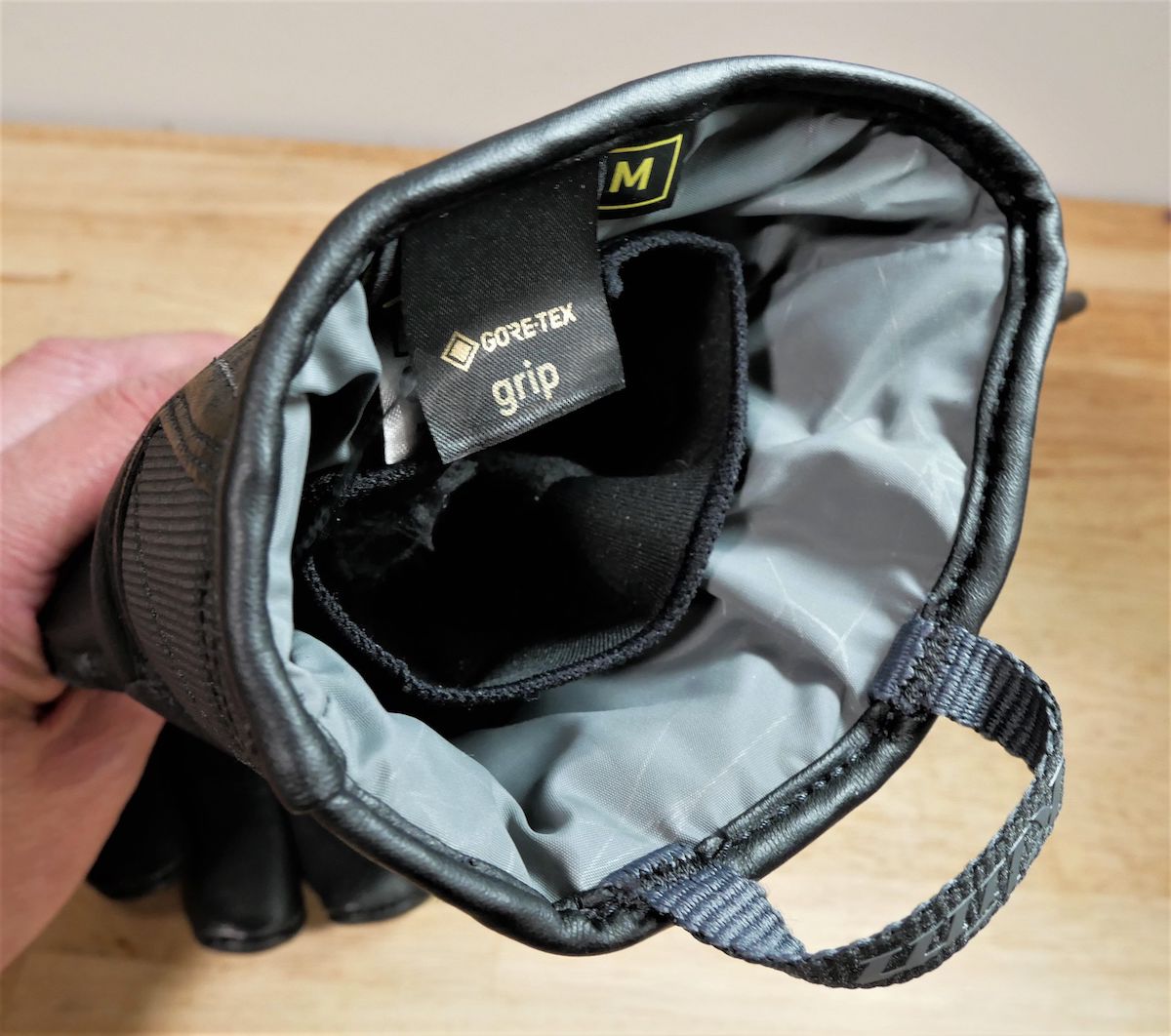
“GTX” signifies the presence of a Gore-Tex liner, providing an additional layer of windproofing along with the breathable waterproofing for which this textile has rightfully become the gold standard. The glove-specific version, called “Gore Grip,” features a tight bond between the glove’s layers. This eliminates any internal slipping that would detract from a stable and precise tactile interface. Whereas the inner layer of Gore-Tex will keep a rider’s hands dry, Scotchguard treatment of the exterior leather and the water-resistant properties of Thinsulate also reduce the rest of the glove’s absorption of water in wet conditions.
One of the most visually striking features of the Badlands GTX Long Gloves is their obvious complexity, with an astonishing number of panels, including segmented articulation of all fingers, accordion-stretch sections on the back of the hand and base of the thumb, index, and middle fingers, and a thin synthetic fabric instead of leather on the back and inboard sides of the wrist to reduce gauntlet bulk for ease of wearing them inside a jacket sleeve (the Velcro-equipped gauntlets are adjustable enough to also fit outside most jacket sleeves). The palms have multiple separate leather overlays, the heel of the hand, outer wrist, and finger backs are covered in padded, flexible ceramic-print armor, and a semi-hard polycarbonate plate protects the knuckles without any uncomfortable impingement or restriction. 3M Scotchlite accents add a bit of visibility, sturdy nylon loops facilitate pulling the gloves on, and the fingertips are equipped with invisible, yet effective, Mult-E-Touch electrostatic screen functionality. Finally, the glove interiors are lined with a layer of luxuriously soft, moisture-wicking microfleece (thicker on the backside), a neoprene “gasket” helps guard against water entry at the cuff, and visor wipers of two consistencies (one very firm, the other more flexible) reside on the index fingers. It’s hard to imagine a more elaborately designed, full-featured glove. Klim markets this model for ADV use, and it certainly appears to be rugged enough to deserve that categorization (rated at CE Level 1).
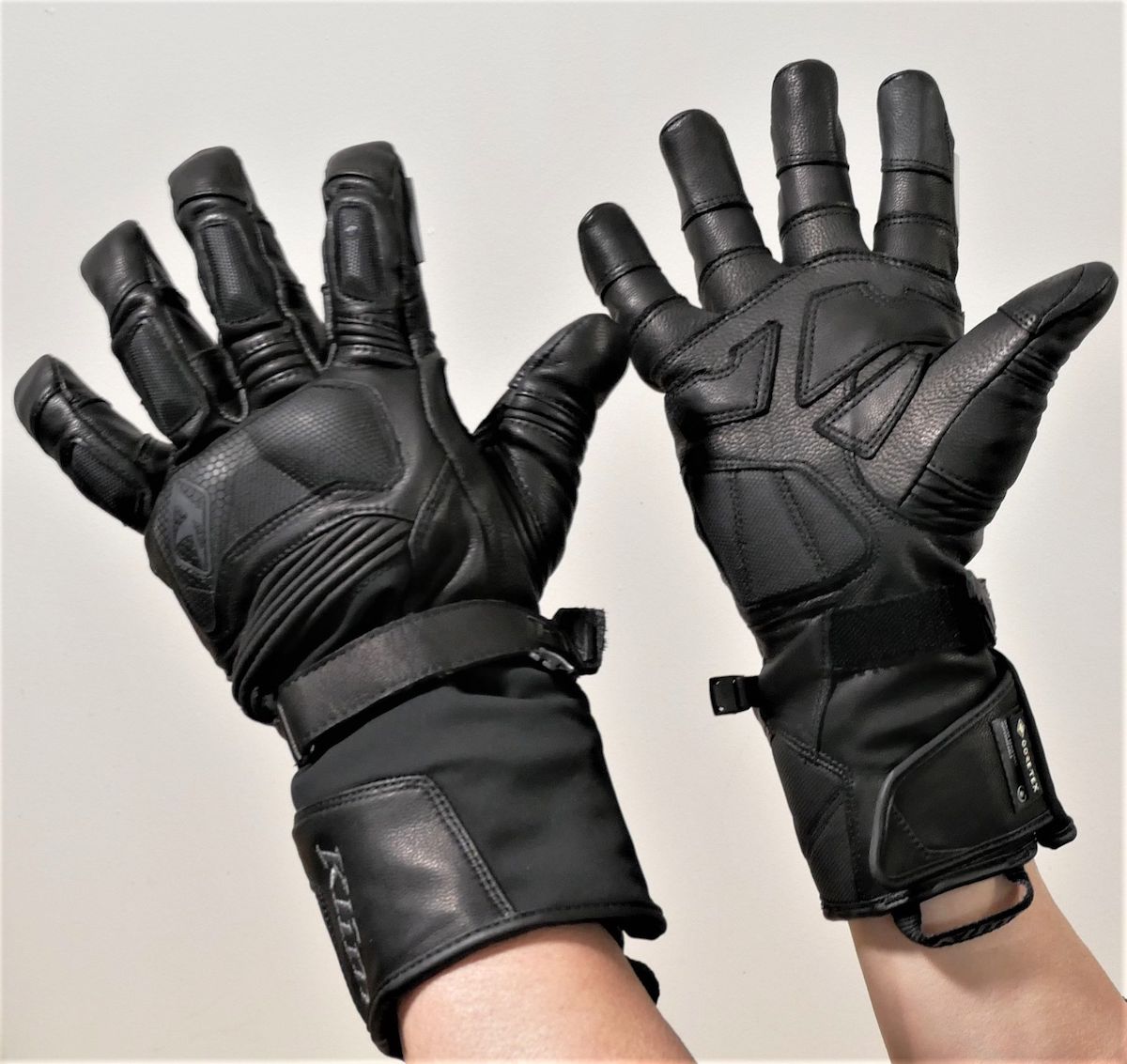
Although they’re a far cry from the slinky variant with which I fell in love last summer, the Badlands GTX Longs really do deliver better feel than any other winter gloves I’ve worn before. While they lack underside insulation, some degree of connection is still lost due to a) the heavily reinforced palms and multi-panel fingers, and b) the backside insulation’s mild resistance to movement and additional girth when maneuvering around control surfaces. Also, when new, the burly leather is a little stiff and must be broken in on a ride or two before achieving its best pliability and fit. I can now enjoy my heated grips sooner and more efficiently, while being shielded from the elements and any impacts far better than I was with my previous gloves. None of my street bikes have wind protection for my hands. I almost never ride in the 30s and I used to resign myself to a certain level of misery in the 40s, but these gloves extend those ranges to allow reasonable comfort down to 40F, and they don’t constantly distract and annoy me with disconnected clumsiness, which I personally find abhorrent.
At $249.99, Klim requires a considerable investment to partake of their top-shelf handwear. Depending on the quantity and intensity of your cold-weather riding and the priority you place on dexterity and tactile connection to your bike, these gloves may be well worth their price. They come in solid black, black/light grey, and black/sage, with sizing from small to 3XL; I found the medium consistent with most other gloves I’ve worn.
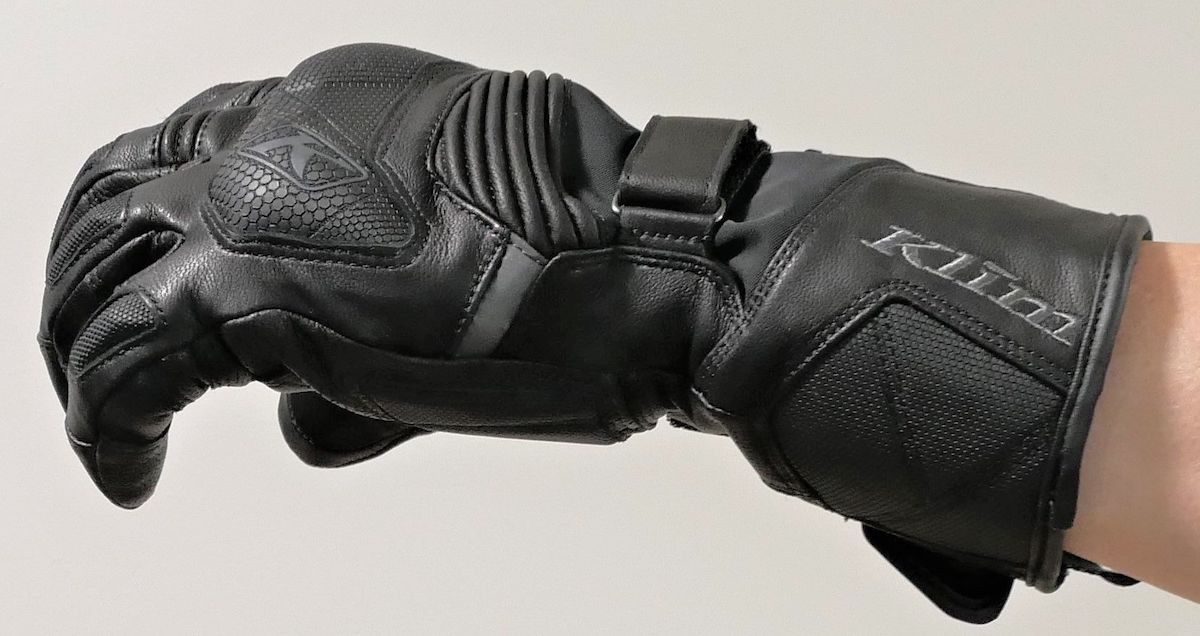
While researching the options, I tried a pair of Klim’s relatively more affordable ($179.95) Vanguard GTX Long Gloves, which sport some of the same basic features, including the enlightened subtraction of underside insulation, Gore Glove breathable wind- and waterproofing, and an equal amount of Thinsulate. Designated a touring glove with much lighter synthetic construction, the Vanguards provide a lot less crash protection. Their neoprene cuffs are very low-profile, making them difficult/impossible to wear on the outside of jacket sleeves, and they didn’t feel quite as warm. Most importantly to me, the Vanguards – despite their geometrically embossed goat leather palms and finger undersides – lacked some of the tactile feel supplied by the Badlands. The Vanguards were also puffier – and therefore slightly more awkward – when operating levers and switchgear. While the Vanguards would have still been an upgrade from my old winter gloves, I swallowed the Badlands’ additional cost to maximize the improvement. Your priorities may favor the Vanguards.
Note: This shopping experience revealed widespread inventory deficiencies when checking the availability of various gloves at numerous manufacturers’ and retailers’ websites. I stumbled upon Union Garage in NYC, a shop that had in stock both gloves I ultimately chose to examine (along with others I couldn’t find anywhere else) and allowed an easy return of the pair I ranked second place.
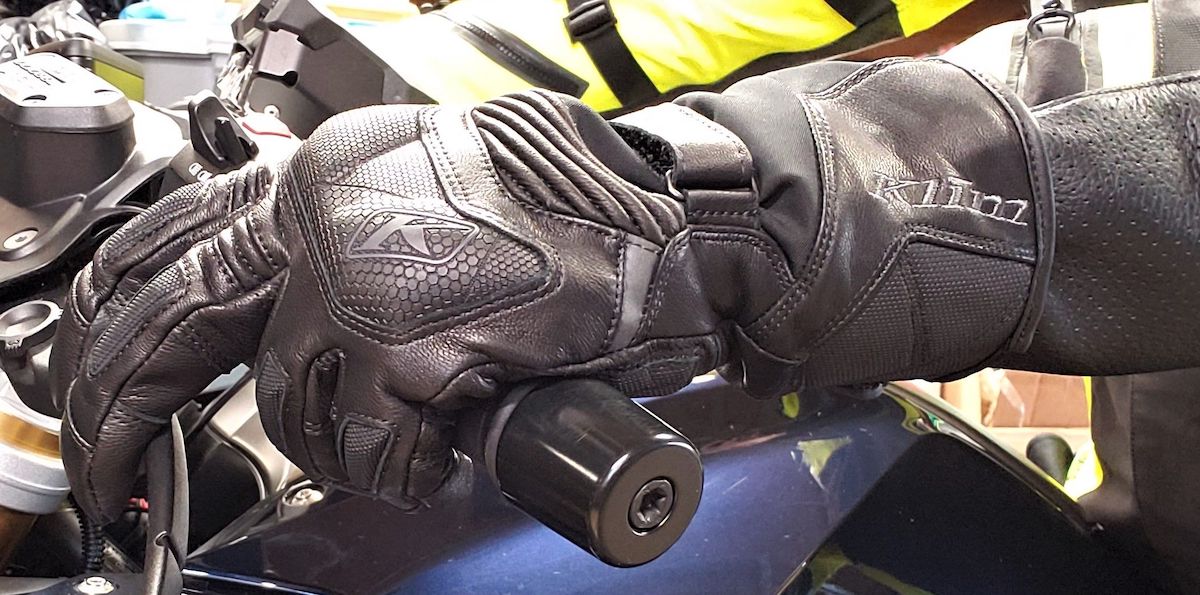


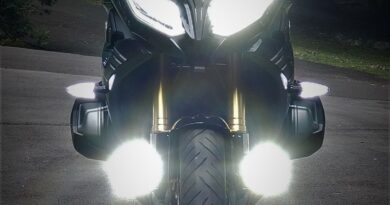
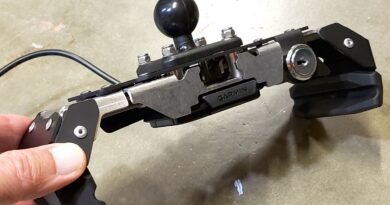
I own them and I’m much less impressed with them than you seem to be. A) they are not especially warm, and B) they’re not especially easy to get on and off. The cuff and gauntlet system is good on paper, but once you’ve managed to get the first glove on and inplace (no simple feat) attempting the same with the second glove is downright comical. The thick and clumsy fingers provide zero tactile dexterity, meaning attempting to manipulate the innersleve of the gloves and the sleeve of one’s jacket is near impossible (think turning pages with boxing gloves). As for comfort…well they are breaking in a bit and that has helped. The only thing the really insulate me from are my heated grips; even when maxed out, the heat barely reaches my palms. Riding in the upper 40s to low 50s, I find myself wondering why I spent nearly $250 for them. Next year I’ll probably try some electrics!